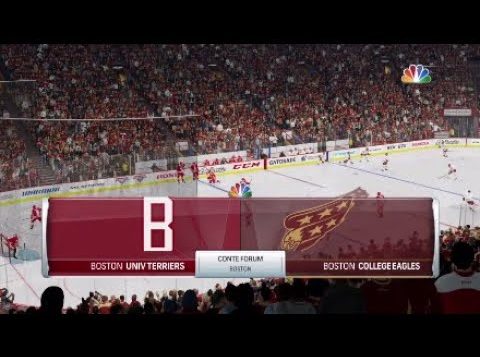This Day in Hockey History – July 11, 1983 – Sun Rises in Hockey East
Hockey leagues rise and fall. In 1983, the three branches of NCAA Division I ice hockey within the Eastern College Athletic Conference (ECAC) essentially split into two. When the Ivy League schools broke away with some of the West schools, the East schools chose to set up their own league, Hockey East. Their founding charter was dated July 11, 1983.
Despite the increased attendance during the 1982-83 season, the Ivy League schools began discussing restructuring the division. Harvard’s athletic director, Jack Reardon, explained, “My wish is to try to keep everything under the ECAC umbrella. I also think that if we end up in two leagues within Division 1, those two league champions could meet to decide an overall champion. I don’t want to see the ECAC get hurt.” ECAC commissioner Scotty Whiteclaw told the press, “The colleges are reviewing their situations. I do know that last year’s format gave us our best overall attendance ever. I have to wait and see what happens. They just may want to have their own playoffs and shoot for automatic berths in the nationals. Naturally, I’d hate to see us lose a great tournament.” The ECAC tournament held at Boston Garden usually raised the most revenue outside of TV and memberships.
To decide their response, the athletic directors for five of the schools in the ECAC’s East division met at Boston University on July 11. Bill Flynn of Boston College (BC), John Simpson of Boston University (BU), Andy Mooradian of the University of New Hampshire (UNH), Joe Zabilski of Northeastern University (NU), and Lou Lamoriello of Providence College (PC) laid the foundation for a new Division I men’s ice hockey conference. Simpson commented, “This is not a bolt from the ECAC. We just want to do what is best for our programs.” His colleague Flynn added, “But you have to go with the times. This concept has plenty of potential.”
The five hoped to become a league of eight. Flynn said, “I see good drawing power. And most people feel that an eight-team league is the best way to go.” Thus, in August, they added the University of Maine, and in September the University of Lowell (now UMass Lowell).
In mid-October, the “new super league” (as the press called it) named Lamoriello as its first commissioner. They also announced that they would begin operations with the 1984-85 season. They set up a 34-game schedule that included interlocking with the eight-team Western Collegiate Hockey Association (WCHA). The Beanpot (between BC, BU, NU, and Harvard) would be preserved.
Since they had only seven teams, the postseason tournament would give the regular-season winner a bye while the other six faced off in a preliminary round. Those three winners and the regular-season winner would then play in the semi-finals. The overall winner would earn a spot in the NCAA championships. Simpson remarked, “Right now, we are not interested in playing the winner of the other league. We plan to approach the Boston Garden people about holding our tournament there. We have the teams that will draw. Some members of the other league tried to make us look bad and we didn’t like it. We made our move, and we’re pleased about it.”
On January 18, 1984, the league held a kickoff luncheon at the Parker House in Boston. There, they announced that they would henceforth be called Hockey East. Jack Parker, the BU coach, commented, “It will bring all of us up a step. It’s only going to enhance our recruiting. We’re going to be able to sell the best hockey league in the United States.”
Today, Hockey East has eleven members for the men and ten for the women, who joined in 2002. In addition to the original seven, the men have added Merrimack College, University of Massachusetts Amherst, University of Vermont, and the University of Connecticut. The women have teams for nine of them (excluding Lowell and Massachusetts) and also added Holy Cross.
Additional Sources:
- http://hockeyeastonline.com/men/hockey-east/index.php
- http://hockeyeastonline.com/pdf/web1819/men/history-in-headlines.pdf
- Bob Monahan, “ECAC schools consider hockey ‘super league,’” Boston Globe, 13 July 1983, p. 57.
- Bob Monahan, “ECAC tourney in jeopardy,’” Boston Globe, 21 Oct. 1983, p. 40.
- Joe Concannon, “Simply Put: Hockey East,” Boston Globe, 19 Jan. 1984, p. 63.














